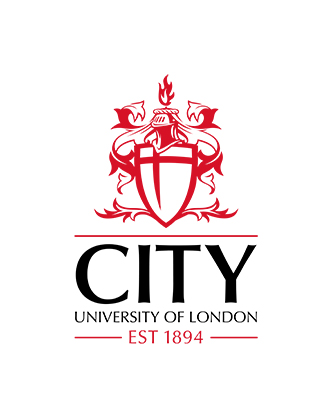Anti-VEGF drugs compared with laser photocoagulation for the treatment of proliferative diabetic retinopathy: a systematic review and individual participant data meta-analysis
Simmonds, M.  ORCID: 0000-0002-1999-8515, Llewellyn, A.
ORCID: 0000-0002-1999-8515, Llewellyn, A.  ORCID: 0000-0003-4569-5136, Walker, R.
ORCID: 0000-0003-4569-5136, Walker, R.  ORCID: 0000-0003-2765-7363 , Fulbright, H.
ORCID: 0000-0003-2765-7363 , Fulbright, H.  ORCID: 0000-0002-1073-1099, Walton, M.
ORCID: 0000-0002-1073-1099, Walton, M.  ORCID: 0000-0003-1932-3689, Hodgson, R.
ORCID: 0000-0003-1932-3689, Hodgson, R.  ORCID: 0000-0001-6962-2893, Bojke, L.
ORCID: 0000-0001-6962-2893, Bojke, L.  ORCID: 0000-0001-7921-9109, Stewart, L.
ORCID: 0000-0001-7921-9109, Stewart, L.  ORCID: 0000-0003-0287-4724, Dias, S.
ORCID: 0000-0003-0287-4724, Dias, S.  ORCID: 0000-0002-2172-0221, Rush, T., Figueira, J. P.
ORCID: 0000-0002-2172-0221, Rush, T., Figueira, J. P.  ORCID: 0000-0003-0883-8521, Sivaprasad, S.
ORCID: 0000-0003-0883-8521, Sivaprasad, S.  ORCID: 0000-0001-8952-0659, Lawrenson, J. G.
ORCID: 0000-0001-8952-0659, Lawrenson, J. G.  ORCID: 0000-0002-2031-6390, Peto, T.
ORCID: 0000-0002-2031-6390, Peto, T.  ORCID: 0000-0001-6265-0381 & Steel, D.
ORCID: 0000-0001-6265-0381 & Steel, D.  ORCID: 0000-0001-8734-3089 (2025).
Anti-VEGF drugs compared with laser photocoagulation for the treatment of proliferative diabetic retinopathy: a systematic review and individual participant data meta-analysis.
Health Technology Assessment, 29(23),
pp. 1-75.
doi: 10.3310/mjyp6578
ORCID: 0000-0001-8734-3089 (2025).
Anti-VEGF drugs compared with laser photocoagulation for the treatment of proliferative diabetic retinopathy: a systematic review and individual participant data meta-analysis.
Health Technology Assessment, 29(23),
pp. 1-75.
doi: 10.3310/mjyp6578
Abstract
Background
Proliferative diabetic retinopathy is a major cause of sight loss in people with diabetes, with a high risk of vitreous haemorrhage, tractional retinal detachment and other complications. Panretinal photocoagulation is the primary established treatment for proliferative diabetic retinopathy. Anti-vascular endothelial growth factor drugs are used to treat various eye conditions and may be beneficial for people with proliferative diabetic retinopathy.
Objective
To investigate the efficacy and safety of anti-vascular endothelial growth factor therapy for the treatment of proliferative diabetic retinopathy when compared to panretinal photocoagulation.
Methods
A systematic review and network meta-analysis of randomised controlled trials comparing anti-vascular endothelial growth factor (alone or in combination) to panretinal photocoagulation in people with proliferative diabetic retinopathy. The database searches were updated in May 2023. Trials where the primary focus was treatment of macular oedema or vitreous haemorrhage were excluded. Key outcomes were best corrected visual acuity, diabetic macular oedema and vitreous haemorrhage. Individual participant data were obtained and analysed for three large, high-quality trials in combination with published data from other trials. Network meta-analyses of best corrected visual acuity and meta-analyses of other outcomes combined individual participant data with published data from other trials; regression analyses against patient covariates used just the individual participant data.
Results
Twelve trials were included: one of aflibercept, five of bevacizumab and six of ranibizumab. Individual participant data were available from 1 aflibercept and 2 ranibizumab trials, representing 624 patients (33% of the total).
When considered together, anti-vascular endothelial growth factors produced a modest, but not clinically meaningful, benefit over panretinal photocoagulation in best corrected visual acuity, after 1 year of follow-up (mean difference in logarithm of the minimum angle of resolution −0.116, 95% credible interval −0.183 to −0.038). There was no clear evidence of a difference in effectiveness between the anti-vascular endothelial growth factors. The benefit of anti-vascular endothelial growth factor appears to decline over time. Analysis of the individual participant data trials suggested that anti-vascular endothelial growth factor therapy may be more effective in people with poorer visual acuity, in those who have vitreous haemorrhage and, possibly, in people with poorer vision generally.
Anti-vascular endothelial growth factor was superior to panretinal photocoagulation at preventing macular oedema after 1 year (relative risk 0.48, 95% confidence interval 0.28 to 0.83) and possibly at preventing vitreous haemorrhage (relative risk 0.72, 95% confidence interval 0.47 to 1.10). Anti-vascular endothelial growth factor reduced the incidence of retinal detachment when compared to panretinal photocoagulation (relative risk 0.41, 95% confidence interval 0.22 to 0.77). Data on other adverse events were generally too limited to identify any differences between anti-vascular endothelial growth factor and panretinal photocoagulation.
Conclusions
Anti-vascular endothelial growth factor has no clinically meaningful benefit over panretinal photocoagulation for preserving visual acuity. However, anti-vascular endothelial growth factor therapy appears to delay or prevent progression to macular oedema and vitreous haemorrhage. The possibility that anti-vascular endothelial growth factor therapy may be more effective in patients with poorer health and poorer vision merits further clinical investigation. The long-term effectiveness and safety of anti-vascular endothelial growth factor treatment are unclear, particularly as additional panretinal photocoagulation and anti-vascular endothelial growth factor treatment will be required over time.
Funding
This article presents independent research funded by the National Institute for Health and Care Research (NIHR) Health Technology Assessment programme as award number NIHR132948.
| Publication Type: | Article |
|---|---|
| Subjects: | R Medicine > RA Public aspects of medicine > RA0421 Public health. Hygiene. Preventive Medicine R Medicine > RE Ophthalmology |
| Departments: | School of Health & Medical Sciences School of Health & Medical Sciences > Department of Optometry & Visual Science |
| SWORD Depositor: |
Available under License Creative Commons: Attribution International Public License 4.0.
Download (4MB) | Preview
Export
Downloads
Downloads per month over past year


 Metadata
Metadata Metadata
Metadata